The cultivation of wine grapes in Australia began at the first arrival of colonists, the vines already got space in the cargo of the first fleet in 1788. Some of the world’s oldest plantations can also be found in Australia, as the majority of the country’s wine regions escaped the phylloxera epidemic that destroyed most of the vineyards in Europe at the end of the 19th century.
[CustomTables]
More serious wine production started later, after the Victorian gold rush in the 1850’s when the population has tripled, and a wealthy middle class emerged, which was eager to consume wine with meals. But the real ascent had to wait until the end of the 20th century. In 1981, Australian wine imports have exceeded exports, and today the export value has nearly reached 3 billion Australian dollars.
The collaboration of the wine sector and the government, the elaboration of a long-term strategy, the well-founded co-marketing and the further development of new wine-making technologies played a large part in this. The latter gave probably the most opportunity for discussion between the Australia of the “New World” and Europe. They were among the first to induct computer controlled, cooled and pressure controlled stainless steel tanks or even the cork replacing screw lock.
Due to the success the wine-growing areas increased from 60 thousand (1990) to 170 thousand hectares (2005), while the annual wine production has reached 11 million hectoliters. As a result, Australia is perhaps the most significantly developing member of the New World wine producers, has become a wine world-power on an international level.
Wine production takes place in the southern part of the continent with moderate climate, particularly in New South Wales, Victoria, South Australia states and the south-western tip of Western Australia. The most significant ones among the 60 wine-growing regions are Riverland, Murray Darling, Riverina, Barossa Valley and McLaren Vale.
Although blue grapes are grown on the 59% of the vineyards, the Australian wineries made a hit with their reliable quality and reasonably priced Chardonnay on the English market. Sauvignon Blanc, Semillon, Riesling, Viognier and Pinot Gris -a fresh and fruity wine, which is considered today’s fashion wine- are also significant among the white varieties.
When thinking of Australia the average consumer yet do not conceive on the white wines for the first time, rather Shiraz, Australia’s flagship red wine that is grown on the largest area today. This grape variety has a Persian origin. It had spread in France as “Syrah” and it gives the one-third of the areas with another red grape, the Cabernet Sauvignon. Merlot, Pinot Noir and Colombard has also an important role.
Initially, the Australian wines fought out their positions on the world market with their excellent price/value rate and prices could be increased in parallel with their reputation, of course within reason. Their strategy was based on the introduction of the “Australian wine” as a brand. They have put emphasis on typical grape varieties while making them fashionable. The most important export markets are Great Britain, United States, Canada and Germany, and lately they mainly focus on the Far East, but do not forget Russia and Central and Eastern Europe.
Here are some of the best known Australian wineries:
Penfolds, Lindemans, Rosemount, Alkoomi Wines, Cassegrain Wines, Rymill Coonawarra, Trentham Estate, Rosenvale wines, Dalrymple, DiFabio, Springvale, Deakin Estate, Katnook Estate, Wombat Hill, Gordon’s Crossing, Bandicoot Estate, Peter Lehmann Wines, 1847 (Curnow Estate ), Cape Mentelle.
Let’s have a look at the six best Australian wineries:
6. Peter Lehmann
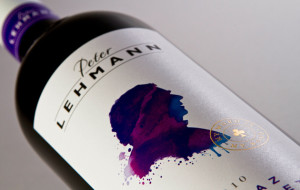
This large winery founded in 1979 purchases grapes from more than 180 producers, develops a wide range of wines and is divided into six brands in the heart of the Barossa Valley. A reliable label with a wide price range.
The warm climate of the region is proptitous to the heady wines, like the Seven Survey SMG (blend of Grenache, Syrah and Mourvèdre), which evokes the spices of a Chateauneuf du Pape.
It pleases us with it’s density, it’s corn salad, it’s fruitiness and powerful woodiness. Others prefer the shiraz, with fruity flavors and a more integrated alcohol.
https://www.youtube.com/watch?v=8FbDaQD3cco
5. Henschke

Still one of the oldest areas of the country, since established in 1868 by the Henschke family. It produces 40 000 bottles of premium wine, with the famous cuvée Hill of Grace being on the highlight, made from the grapes planted before the era of phylloxera.
This wine, from a tiny plot of two hectares, is a monument , but is unfortunately practically untraceable. Other vintages like, among others, Cyril Henschke Cabernet Sauvignon or Abbott ‘s Prayer show great skill and express a profound style, far from the too many stereotyped wines produced in the country.
The Keyneton cuvée (shiraz/cabernet/merlot) bursts of sunny cabernet aromas (blackcurrant, violet), the mouth is balanced between wood , green pepper and blackbery. It is easy to drink with it’s long, sweet finish.
4. Jasper Hill
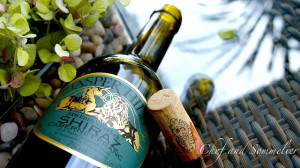
Small family estate , created in 1975 by the talented Ron Laughton , Jasper Hill produced some of the most “individual” wines from Australia. With perfectly held vines with very low yields, foot francs plants and a philosophy close to nature and its soil, Ron Laughton is one of the great winemakers of the country, insomuch as Michel Chapoutier would like to develop his activities in Australia.
Here we can enjoy a superb Riesling, frank and mineral, but especially two magnificent vintages with Syrah dominating in them, called Emily’s Paddock and Georgia ‘s Paddock. All wines are aging gracefully. They are distributed in France by the house Chapoutier.
3. D’Arenberg
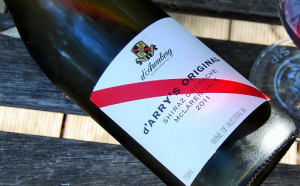
Chester Osborn is the fourth generation at the helm of Arenberg, this winery in the McLaren Vale. It produces about thirty cuvées both red and white, dry and sweet.
One of his finest wines is dedicated to plants stricken with eutypiose (a disease caused by a fungus and killing the grapevines).
It’s name is Dead Arm (syrah wine), referring to the dead arm that no longer bears fruits.
2. Petaluma
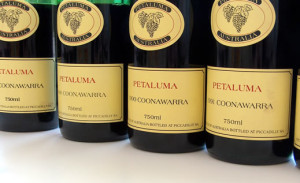
Established in 1976, the domain of Petaluma figure the “old house” on the Australian scale. The range is too broad to excellence is waiting for you at every level, but all is in good order.
To taste : Riesling, dry and mineral, the beautiful vintage of syrah and the cabernet-merlot of Coonawarra Valley.
The experience and the age of the vines make Petaluma an unavoidable domain in the area of Barossa Valley. The interest shown by Bollinger since 1985 is a proof for this, who became a shareholder who distributes these wines in France via BLD Distribution.
1. Cape Mentelle
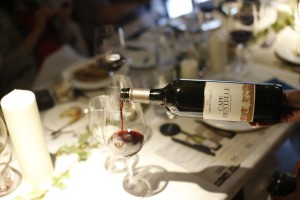
This vineyard, in the extreme southwest of the country, is one of the newest and most dynamic in the country. Property of Moet et Chandon, it is known for its white wines made from a blend of Semillon and Sauvignon The Trinder’s, a blend of Merlot and Cabernet, plays the card of sophistication: it is characterized by a minty fragrance and a structured palate that should deepen with aging.
Australia grows grapes and makes wines in all of it’s six states. The wine regions of decisive importance, however, are located in the south-eastern part of the continent, mainly in South Australia, New South Wales and Victoria states.
The old-established wineries of the Barossa Valley (South Australia), the Hunter River region (New South Wales) to the north from Sydney and Victoria state have played a significant role in the industry’s development and remain important in the production of fine wines. Today, there are more than sixty wine regions in Australia that cover the country’s climatic and soil diversity.
“ The wine culture is part of the Australian way of life ”
To mention a few from the most famous: Mudgee, the Murrumbidgee and the Murray River Valley (New South Wales); Southern Vales, Clare Valley and Riverland (South Australia); Rutherglen and Yarra Valley (Victoria). Western Australia, Tasmania and Queensland has a smaller wine industry, but recently there is a significant increase in production volume, quality and reputation. The Australian capital, Canberra and the surrounding area is known for its cooler climate, they produce the suitable wine varieties here.
The reputation of Australian wines is mainly due to the wide variety of grapes. In 2003-2004 Shiraz was the most produced variety, followed by Chardonnay and Cabernet Sauvignon. Besides the successful Chardonnay, Semillon, Chardonnay and Colombard are also auspicious. Shiraz, Cabernet Sauvignon, Merlot, Grenache and Pinot Noir are also noted among red wines.
The wine culture is part of the Australian way of life, it is intrinsically linked to business and leisure activities. The outdoors recreation programs that is so typical of the Australian lifestyle are strongly linked to the consumption of wine, but it also affecting the cosmopolitan, metropolitan lifestyle of the large part of the Australian population. In Australia’s most important wine regions the cultural life is unimaginable without wine festivals. These events attract a lot of domestic and foreign tourists, visitors year after year.
https://www.youtube.com/watch?v=DFf9eDtvvZI
We are glad that you joined us for our wonderful journey into Australia. We can show you many more top notch wines from Uruguay, Argentina, Germany, United States, Austria and Chile. Choose your preference!
